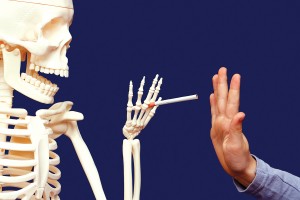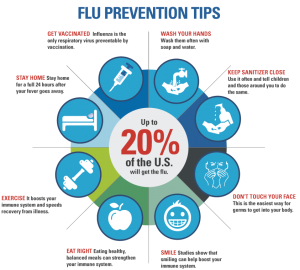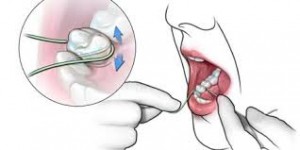Coffee could be a lifesaver. But coffee has long been a subject of heated discussions. It has been praises or condemnations. Researchers designed many studies in the past; some showed health benefits, some did not. A new, larger study was done by the Department of Nutrition, Harvard School of Public Health in Boston, MA to re-examine this issue for both caffeinated and decaffeinated coffee.
Here is the study showing why coffee could be a lifesaver
Mortality was determined among 74,890 women in the Nurses’ Health Study (NHS), 93,054 women in the NHS 2, and 40,557 men in the Health Professionals Follow-up Study after a medium follow-up of 22.5 years. 19,524 women and 12,432 men died during that time period. Ming Ding is a doctoral student in the Harvard School of Public Health department of nutrition and was the lead author of the study that was published in the medical journal “Circulation”. She pointed out that in the past there were confounding problems: although many studies had shown that both caffeinated and decaffeinated coffee consumption lowered the risk of cardiovascular disease, the results in many studies were blurred. Studies often did not distinguish between smokers and nonsmokers; so a beneficial effect from coffee drinking was wiped out by the cardiovascular risk from smoking.
Ding’s studies took this into account and also other confounding factors like how much sugary soda pop people were drinking and whether or not they were eating well. In addition they normalized for other factors that could interfere like drinking alcohol and eating red meat.
Results of the coffee study
Without normalizing for the factors mentioned above the study results were as follows. Study participants had less than a cup of coffee and three cups a day had a 5% to 9% lower risk of dying than those who drank no coffee. Those who drank more than three cups a day did not see any benefit.
However, when the researchers removed all the confounding factors and compared the various groups again, the following emerged:
- Less than 1 cup of coffee per day: 6% lower death rates than non-coffee drinkers.
- 1 cup to 3 cups of coffee per day: 8% lower death rates.
- 3 to 5 cups of coffee per day: 15% lower death rates.
- More than 5 cups of coffee per day: 12% lower death rates.
Both caffeinated and decaffeinated coffee reducing mortality rates
Ming Ding was associated with another research paper that had shown that coffee drinkers have a lower risk of developing type 2 diabetes and heart disease. She found that both caffeinated and decaffeinated coffee reduced the risk of getting diabetes later.
When asked about what would be responsible for the reduced death rates with coffee consumption, Ding explained. “There are at least two known chemicals in coffee, namely lignans and chlorogenic acid. They both could reduce inflammation and help control blood sugar. Also, both could help reduce the risk of heart disease”.
Although there seems to be a linear response up to 5 cups of coffee consumption, above 5 cups this linear relationship disappeared. The researchers could not explain whether coffee consumption reached a saturation point, whether there was yet another obscure confounding factor or whether there were detrimental effects on the adrenal glands with too much coffee consumption.
Other findings like decreased suicide rates with coffee consumption
Another finding was that it did not matter whether the coffee contained caffeine or was caffein free. The results were identical.
Many other studies did not have the large numbers to show whether or not coffee without caffeine was as effective in preventing heart disease.
Finally, there was another peculiar finding; suicide rates were down by 20% to 36%, if a person drank at least one cup of coffee per day. But if a person consumed less than 1 cup of coffee per day the suicide rate was 36% higher than the control group with no coffee consumption. This is a rather peculiar finding, particularly for the consumption of less than 1 cup of coffee. But other studies have also shown a decrease in suicide rates with coffee consumption.
No effect on liver and prostate cancer
Previous studies had shown a reduction in liver and prostate cancer. But after the removal of confounding factors this study did not show any effects on cancer causation. Cancer death rates also did not show a reduction with coffee consumption.
Discussion
The Department of Nutrition, Harvard School of Public Health in Boston, MA produced high quality nutritional studies for decades. But this study is particularly important, because it is so large giving it more statistical power; secondly, the observation time of an average of 22.5 years is longer than most coffee studies in the past. The investigators also removed the noise (called confounding factors). This helped to accomplish the objective of the study and they ended up with a very meaningful result.
Apart from saving lives by drinking coffee, diabetes and heart attack rates lower as well
The important findings were that both caffeinated and decaffeinated coffee have the same effect of saving lives. Perhaps you want to drink not more than 5 cups of coffee per day. That lowers your risk of premature death by 15%. What counts is the effect of lowering the rate of diabetes and heart attack rates. This is most likely responsible for the risk reduction. At least this was the opinion of the chief investigator. The study showed that coffee consumption did not lead to a reduction in cancer rates.
I sleep better when I drink decaffeinated coffee. So for me the notion that decaffeinated coffee had the same effect as regular coffee was important.
Conclusion
Here is a study that is large enough, went long enough, and showed decisively that coffee can reduce the death rate. Both caffeinated and decaffeinated coffee showed the effect of reducing the death rate. The mortality reduction was by 15% up to 5 cups of coffee per day. This finding was true for both males and females. Coffee seems to also reduce the suicide risk by a mechanism that has not yet been determined. Do you want to live 15% longer than your previous life expectancy would have been without coffee? Then you may now have your coffee and enjoy it!










